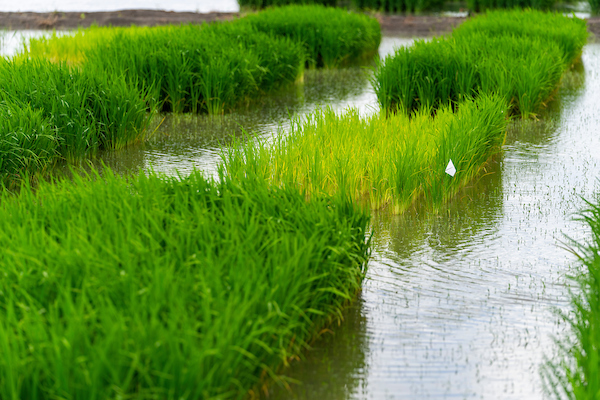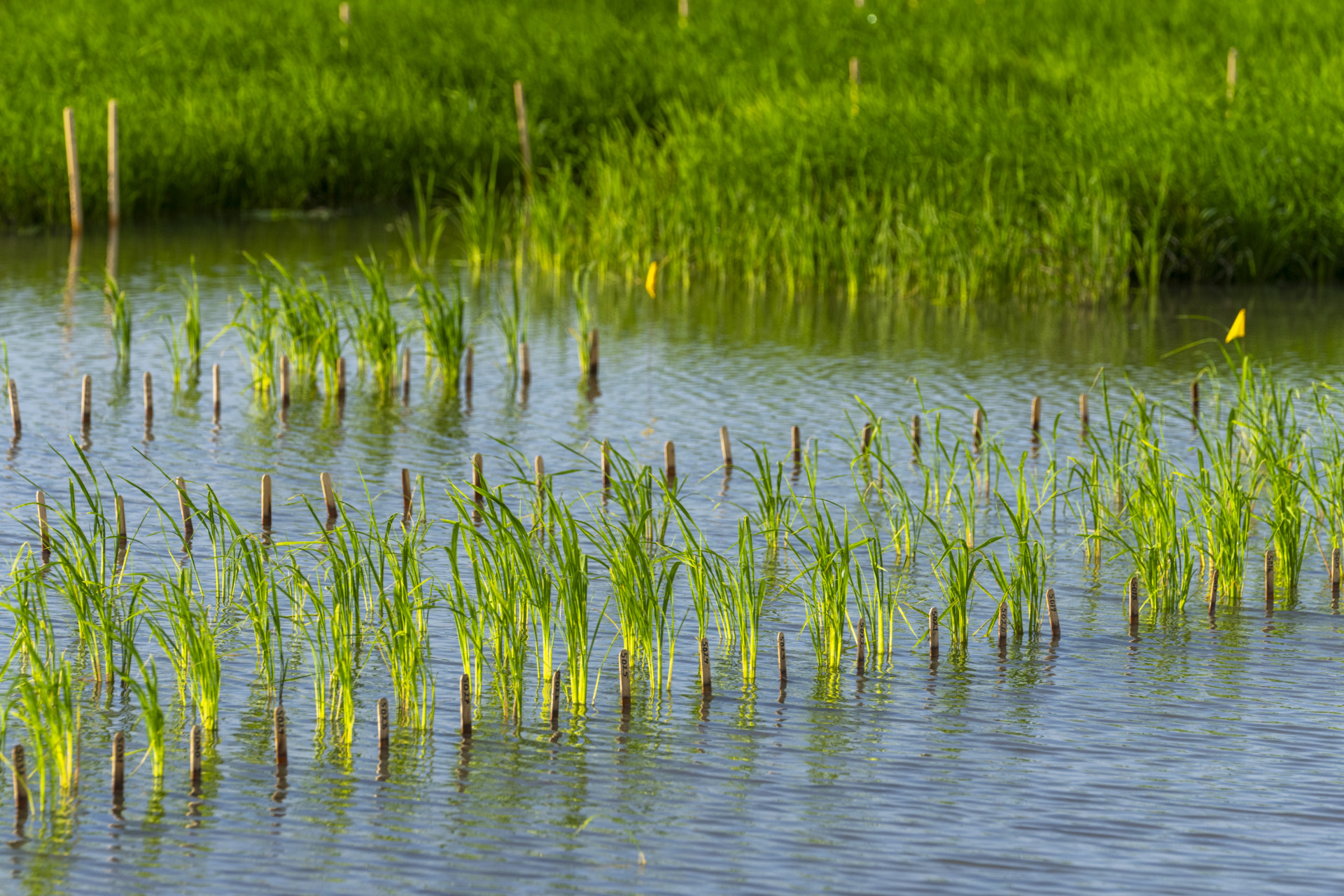Texas rice crop prospects get soggy under excessive water

Writer: Kathleen Phillips, 979-845-2872, [email protected]
BEAUMONT — Record flooding in Texas this year may even oversaturate the water-loving rice crop and cause a 10-15 percent per acre decrease in the 2016 yield, officials estimate.
“The overall planted acreage is up by about 28 percent, which is good,” said Dr. Ted Wilson, center director at the Texas A&M AgriLife Research and Extension Center-Beaumont. “Those who managed to get into fields to plant before the rains began to delay things – as long as their fields weren’t flooded – they are doing OK. But we’ve had some areas that have received a tremendous amount of rain, so I don’t doubt that the yields are probably going to be down.”
Wilson and his team in Beaumont work with the rice industry to produce a weekly Rice Crop Survey for the four-region, 21-county rice-producing area of Texas.
The optimum planting time for the Texas rice crop is mid-March through mid-April, he said. If planted on time, rice farmers cut a first crop and then allow the plants to grow again for a second, or ratoon, he explained.
“We’re not on schedule and it’s all spread out, depending on where the rain and floods have been,” Wilson said. “The latest I’ve seen the commercial rice crop planted has been mid-June. I don’t know how much that will be the case this year, but the later it is planted, the less time there is to grow the second crop.”
That’s where the drop in overall yields will be determined, he said. The ratoon crop acreage is normally 50-85 percent of the first crop, depending on the county, giving producers the much-needed added income.
“The high rainfall will definitely reduce this year’s ratoon crop production,” Wilson added.

The most recent weekly rice crop survey released June 3 indicated 165,482 acres to be planted this year. About 75 percent of the state crop had been planted by the mid-April optimum time. The remaining 25 percent inched toward completion in the ensuing seven weeks, and planting in six of the rice producing counties still was not complete.
Beyond the unusual rainfall and flooding this season, Wilson pointed to two other factors normally impacting Texas rice: the release of water from the Lower Colorado River Authority to farmers for use in agriculture and the glut of rice on the world market due to extensive subsidies by the Thai government.
The first, Wilson said, led to farmers deciding to plant more acres. But the second factor – the oversupply from Thailand – suppressed prices to the point that farmers had to put a pencil to what price would be “required to make a reasonable living.” That’s why a weather-related reduction in yield could cause a huge dent at the farm level.
He said ultimately Texas production may show an increase in total production – given the higher percent planted – but the yield per acre on individual growers will be where the loss is felt.
Wilson said the rains and floods also are impacting the Beaumont center’s experimental rice crop planting. The station’s researchers annually plant numerous plots to study everything from potential new varieties to insects and diseases that can target rice. Delayed planting means some scientific studies could be postponed for a year, he said.
The U.S. Department of Agriculture is expected to release its rice crop estimates in about a month, and Wilson said those numbers may be more precise since they are tied to farm program signup.
“If we have really great weather for the rest of the year, it could change the outcome,” Wilson said, “but a 10-15 percent yield reduction is a reasonable estimate at this point.”
To follow the Texas rice crop, see https://beaumont.tamu.edu/CropSurvey/.





